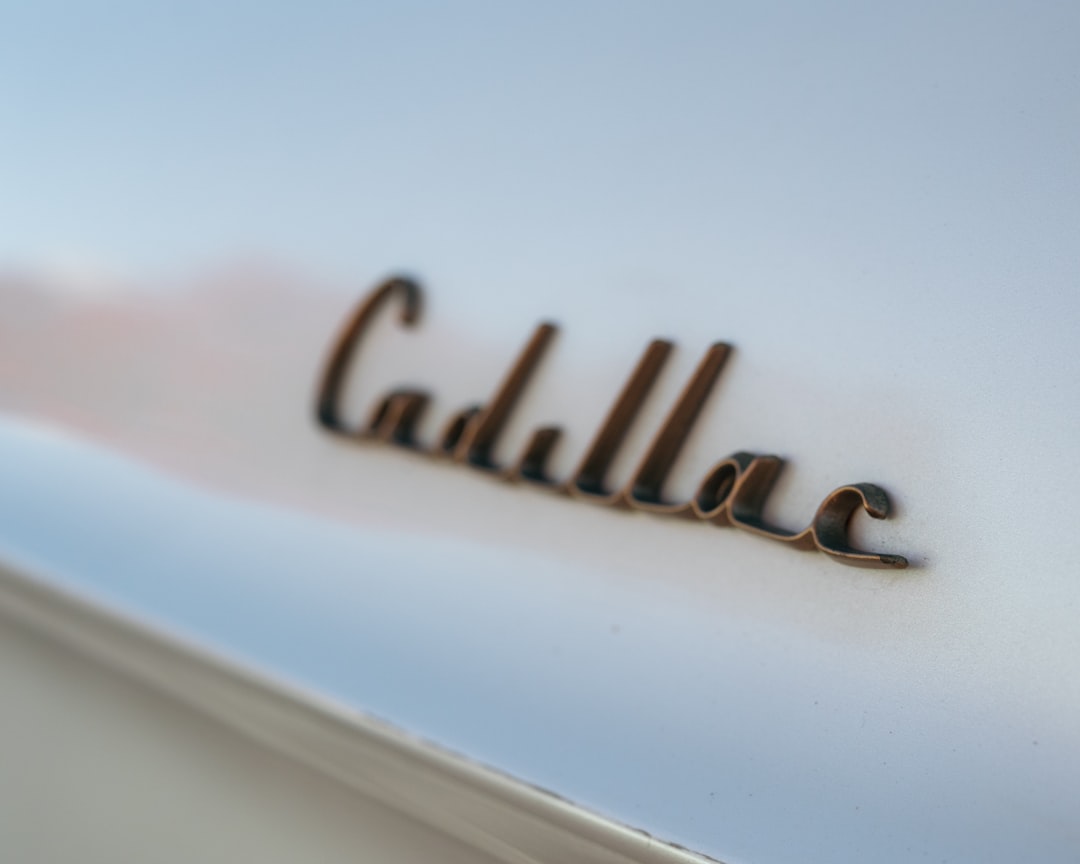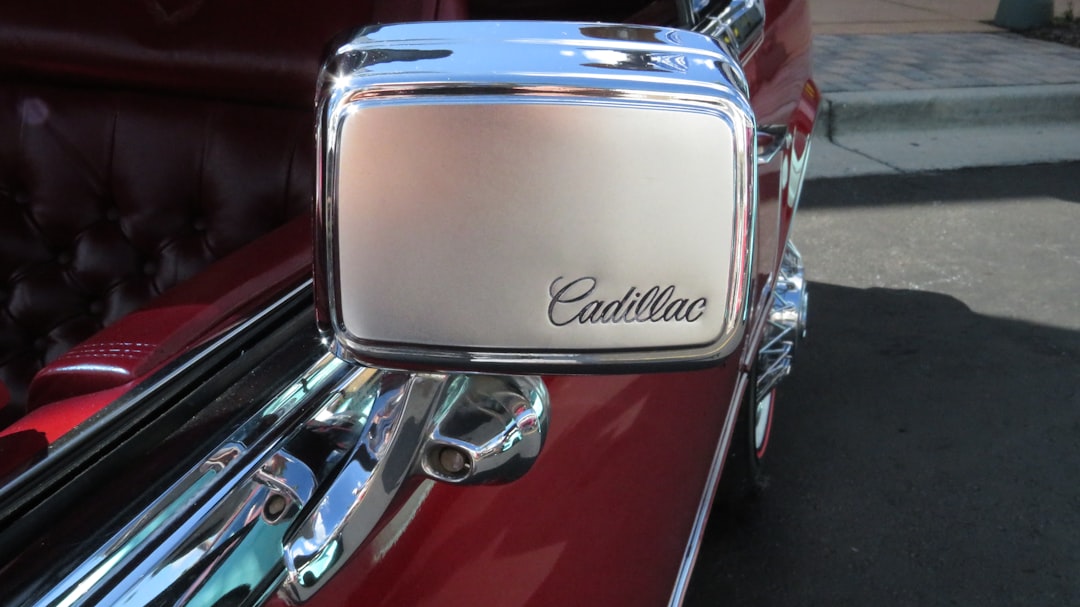Evaluating Transmission Upgrades for the 2002 Cadillac Escalade
Evaluating Transmission Upgrades for the 2002 Cadillac Escalade - Examining the factory four speed transmission capability
The 2002 Cadillac Escalade featured a four-speed automatic transmission from the factory, most commonly the 4L60E series. This unit was a familiar component across GM's light truck and SUV lineup for a considerable period, known for its relative simplicity and durability in standard applications. For everyday driving and moderate demands within the vehicle's original specifications, it generally performs as intended. However, when aspirations move towards significantly increasing engine output or tackling heavier hauling tasks, the limitations of this dated four-speed design quickly become apparent. Extracting serious performance or ensuring longevity under stress often necessitates addressing the gearbox's inherent capacity. Options range from internally fortifying components like the input shaft or clutch assemblies to considering more modern transmissions with additional gears, which can offer a broader performance envelope and potentially more efficient operation at speed compared to the original setup. Understanding these boundaries is fundamental when evaluating the path forward for enhancing the '02 Escalade's powertrain capabilities.
Examining the foundational four-speed transmission package within the 2002 Cadillac Escalade reveals certain inherent characteristics that warrant consideration when contemplating performance increases. From an engineering standpoint, several observations become apparent regarding its capabilities under stress:
1. The factory transmission, designated primarily for a comfortable cruising experience, possesses an effective torque handling ceiling that resides rather closely to the unmodified engine's maximum output. This tight proximity inherently limits the practical overhead available before internal components begin to operate under levels of mechanical strain not originally intended for sustained duration.
2. A frequent point of technical discussion, the third and fourth gear clutch pack's propensity for distress under load, appears to stem less from the quality of friction materials themselves and more from an architectural constraint. The physical dimensions of the clutch drum restrict the number of friction elements and thus the total engagement surface area that can be incorporated, representing a fundamental bottleneck for absorbing significantly elevated torque transfer.
3. Data logs often show transmission fluid temperatures escalating at a considerable rate when the vehicle encounters increased load from altered engine parameters or aggressive driving patterns. This rapid thermal rise can quickly push temperatures past thresholds critical for long-term seal integrity and the optimal frictional properties of the clutch packs, potentially accelerating wear and reducing component lifespan prematurely.
4. The hydraulic control logic, while meticulously calibrated for delivering smooth, almost imperceptible shifts in its original state, introduces an intrinsic response delay. This characteristic makes it technically incapable of executing the kind of swift, positive gear changes necessary to fully capitalize on the broadened power band and enhanced responsiveness targeted in a tuned engine application.
5. It is noteworthy that the primary structural casing itself can, under peak dynamic loads such as aggressive standing starts or transient torque spikes from forced induction, exhibit measurable flex or localized stress points. This suggests a potential for casing deformation or even fracture under conditions substantially exceeding the unit's original design parameters, an aspect perhaps not immediately obvious in a standard production component.
Evaluating Transmission Upgrades for the 2002 Cadillac Escalade - Evaluating strengthened four speed rebuild options
Reinforcing the standard four-speed automatic transmission in the 2002 Cadillac Escalade involves a concentrated effort to elevate its inherent capability beyond original specifications. This isn't simply a matter of replacing worn parts; it necessitates strategic fortification of critical internal components. Implementing upgraded clutch packs, enhanced hard parts designed for higher torque loads, and improved hydraulic control elements are fundamental steps to managing the stresses imposed by increased engine output or demanding conditions. Addressing the unit's propensity for thermal breakdown under sustained load is also a key area of focus in a robust build. Yet, even with these significant internal enhancements, the basic four-gear architecture presents a natural boundary compared to transmissions offering a greater number of ratios. The evaluation of pursuing a highly strengthened four-speed rebuild must weigh the gains in durability and torque capacity against the differing performance characteristics and efficiency potential provided by transmissions built on more modern designs with additional gears.
Exploring methods to bolster the performance potential of the four-speed automatic transmission often involves dissecting the original unit and strategically incorporating revised components. For applications aiming significantly beyond the original design brief, such as those paired with higher-output powertrains, a deeper look into the 'build sheet' reveals specific areas addressed by experienced calibrators and hardware developers. The approach isn't simply swapping worn parts, but rather applying learned lessons from operating these units under duress. Consider these points when examining robust rebuild strategies:
Enhanced input shafts, frequently manufactured from sophisticated alloys and subjected to rigorous thermal treatments, are designed to withstand peak torsional impacts far exceeding the original component's capacity. This directly targets potential failure modes under abrupt, high-torque transients often encountered with aggressive tuning or launch control.
Integrating advanced surface modifications, such as low-friction coatings on rotating elements and specialized finishes on heat-sensitive components like clutch drums, can contribute tangibly to mitigating internal parasitic drag and assisting in managing operating temperatures under sustained load – a known challenge with these older designs.
Revised hydraulic pump assemblies, featuring precisely machined internal profiles for the gerotors and stator vanes, prioritize consistent and ample fluid delivery across a much broader range of transmission input speeds. This is critical to maintain stable hydraulic pressure and prevent cavitation, particularly as engine RPM increases and demands on the system rise.
The replacement of original-specification accumulator pistons, which were often made from less durable materials, with high-precision, billet-machined equivalents is a seemingly minor yet impactful modification. These upgraded pistons ensure superior sealing and consistent hydraulic damping within their bores, enabling more positive and repeatable shift events across the operational spectrum, addressing some of the inherent vagueness of the factory control.
Beyond strengthening the internal hard parts, some comprehensive rebuild approaches involve targeted structural enhancements to the transmission casing itself. This can include CNC machining to integrate additional bracing or optimize fluid flow paths in critical high-stress areas identified through failure analysis, acknowledging that the original casting wasn't engineered for the extreme dynamic loads sometimes imposed by modified engines.
Evaluating Transmission Upgrades for the 2002 Cadillac Escalade - Considering later model six speed transmission conversions
Moving beyond reinforcing the original four-speed unit, contemplating the fitment of a later-model six-speed automatic transmission represents a significant leap in terms of engineering complexity. The appeal lies in transmissions like the 6L80 or 6L90, which offer a broader selection of gear ratios. This theoretically permits a lower effective first gear for improved initial acceleration characteristics and a taller final gear, aimed at reducing engine RPM during steady-state highway cruising, potentially contributing to better fuel efficiency compared to the limited four-speed spread. However, adapting these modern transmissions into the platform of a 2002 Escalade introduces substantial technical challenges. These newer transmissions are intrinsically linked to complex vehicle communication networks and rely on sophisticated transmission control modules (TCMs) that operate very differently from the original, simpler controls. Successfully integrating this advanced electronic architecture requires resolving communication conflicts between the newer TCM and the vehicle's existing engine control unit (ECU) and body control systems, often necessitating specialized interface modules, custom wiring harnesses, and extensive calibration work. Furthermore, the physical installation is rarely straightforward, involving potential modifications to the transmission crossmember, driveshafts, and even exhaust routing due to differences in size, shape, and mounting points. While the allure of two extra gears is undeniable, the practical execution demands a deep dive into vehicle electronics integration and potentially significant fabrication effort.
Here are up to 5 surprising facts readers would love to know about considering later model six speed transmission conversions for the 2002 Cadillac Escalade:
Unexpectedly, the largest hurdle in a six-speed conversion is often the complex electrical interfacing rather than physical mounting, requiring intricate translation between different vehicle communication network protocols that were simply not designed to converse.
The addition of two extra gears allows for tighter ratio spacing, enabling the engine to stay within its optimal power or efficiency band more effectively, a core principle actively engineered into modern powertrain designs spanning everything from economical urban transport to high-performance supercars aiming for maximum mechanical advantage.
At typical highway cruising speeds, a six-speed unit can reduce engine RPM by several hundred revolutions compared to the original four-speed, resulting in a measurable reduction in fuel consumption and a tangible improvement in interior cabin noise levels, directly enhancing the vehicle's inherent luxury characteristic.
Integrating a modern transmission invariably demands recalibrating sophisticated torque management features often deeply embedded within their control logic; failure to correctly tune these parameters to match the host engine's characteristics can paradoxically limit peak performance until this electronic handshake is properly orchestrated.
Achieving full seamless functionality, extending beyond basic gear selection to encompass factory features such as cruise control engagement or the specialized Tow/Haul operating mode, frequently necessitates extensive custom software calibration far beyond simple shift schedule adjustments for genuinely reliable day-to-day operation.
Evaluating Transmission Upgrades for the 2002 Cadillac Escalade - Understanding the technical effort involved in upgrades
Undertaking transmission enhancements for the 2002 Cadillac Escalade requires a solid understanding of the technical labor involved. Moving to a transmission design beyond the original unit isn't a straightforward component swap; it dives deep into the integration of systems never intended to interact. The primary challenge frequently resides in marrying modern electronic control units with the vehicle's dated communication protocols. This demands more than just physical connections – it necessitates meticulous attention to wiring, signal interpretation, and bespoke calibration work to get everything speaking the same language effectively. Furthermore, physically installing a transmission with a different architecture invariably involves fabrication and adaptation, potentially requiring adjustments to mounting points, driveline length, and even exhaust routing. Acknowledging the significant electronic and mechanical effort upfront is crucial when evaluating the practical feasibility of such performance upgrades.
Here are some specific technical challenges encountered when pushing for improved transmission performance:
Ensuring the complex algorithms governing line pressure and shift timing precisely orchestrate the engagement and release of clutch packs with micron-level precision requires extensive calibration effort under varying load conditions, a level of detail mirroring high-end competitive powertrain tuning.
The sheer quantity of heat generated under elevated load necessitates engineering effective thermal management solutions; integrating appropriately sized external fluid heat exchangers and designing robust plumbing to function reliably within the vehicle's restricted underbody space is a considerable technical undertaking.
Mitigating the undesirable transmission of noise, vibration, and harshness (NVH) that can arise from firmer shifts and uprated internal components is critical for preserving the luxury feel. This demands not only careful electronic control tuning but potentially bespoke mechanical solutions for mounting or damping.
Adapting or fabricating propeller shafts to interface with different transmission output splines or lengths involves critical mechanical engineering principles; precise measurement, selection of materials, and dynamic balancing are paramount to avoid driveline vibrations or potential high-speed failure, a detail often overlooked.
Successfully integrating the upgraded transmission control module's outputs and sensor inputs into the broader vehicle network – ensuring compatibility with anti-lock braking, stability control, and even basic cruise control systems – requires intricate analysis and potentially translation layers for disparate communication protocols, a complex electronic puzzle.
More Posts from tunedbyai.io:
- →2017 Ford Focus Transmission Replacement A $5,000 Repair in 2024
- →Diagnosing and Replacing the Clock Spring in Your 1999 Jeep Cherokee A Comprehensive Guide
- →2015 Chevy Equinox A Deep Dive into Its 1125-Inch Wheelbase and Key Dimensions
- →Jetta Hybrid Transmission Woes Analyzing the DQ200 7-Speed DSG Recall and Long-Term Reliability
- →The Importance of Timing Chain Tensioners Maintaining Engine Health and Performance
- →Jeep's CVT Evolution Analyzing Performance and Reliability in 2024 Models

